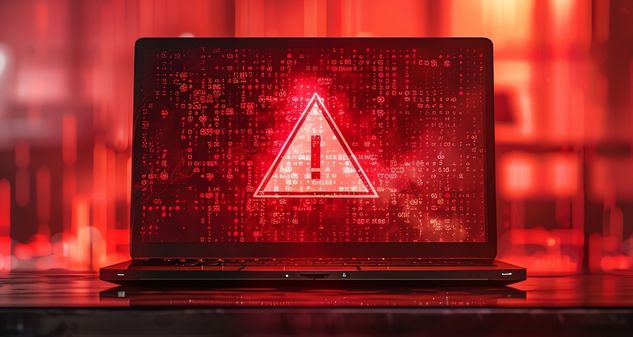With businesses becoming more dependent on technology, the risk of malicious attacks has also increased. These attacks can take various forms, like viruses, ransomware, or phishing scams, and they can cause serious harm to a company. Preventing these threats isn’t just about keeping data safe; it’s about ensuring your business can continue to operate smoothly.
In this guide, you’ll learn how to protect your business technology from cyber threats with practical, easy-to-understand steps.
Common Cyber Threats to Be Aware Of
To effectively protect your business, it’s important to first understand the common types of threats you may face. Cybercriminals use different methods to try and break into systems. Some of the most frequent attacks include:
- Malware: This is harmful software designed to damage or take control of a system. Examples include viruses, spyware, and ransomware.
- Phishing: This tactic tricks employees into revealing important information like passwords or financial details. Often, cybercriminals send emails that look legitimate to fool people into clicking harmful links.
- Denial of Service (DoS) Attacks: These attacks overwhelm a company’s network by flooding it with excessive traffic, causing systems to crash and become unavailable.

With these threats, it’s best for business owners to seek small business IT support Bellevue providers offer. Doing so helps them prepare for the worst-case scenario.
Strengthening Passwords and Using Two-factor Authentication
One of the easiest ways to protect your business is by enforcing strong password policies. Weak passwords create an easy way for hackers to gain access to your systems. Employees should always use passwords that include a mix of letters, numbers, and special characters.
Furthermore, adding two-factor authentication (2FA) provides an extra layer of protection. This means that in addition to entering a password, employees must also confirm their identity with a second method, such as a code sent to their phone. By using 2FA, even if a password is stolen, attackers would still need the additional verification code to break in.
Another important practice is requiring regular password changes. If passwords are updated every few months, it significantly reduces the chances of unauthorized access through old, compromised credentials.
Keeping Software Updated
Outdated software is one of the easiest entry points for cybercriminals. When software isn’t updated, it can have security weaknesses that hackers know how to exploit. Therefore, it’s critical to always keep your business software up to date.
Most software providers release updates that fix these weaknesses, so turning on automatic updates is a smart way to make sure your systems stay protected without needing constant manual effort. This simple step can prevent a wide range of cyber attacks.
Educating Employees on Security Best Practices
Even the best technology can’t protect a business if employees don’t know how to handle cyber threats. Therefore, regular cybersecurity training is essential. Employees should be aware of how to spot phishing emails, avoid downloading suspicious attachments, and follow proper protocols for handling sensitive business data.
For example, make sure employees know never to click on links or open attachments from unknown sources. Additionally, teaching them how to recognize fake emails and websites can significantly lower the risk of a phishing attack succeeding.
Another helpful tool is running security drills. By testing employees with mock phishing emails or other simulated threats, businesses can see how well they respond and identify areas where more training is needed.
Regular Data Backups
Despite all precautions, no system is completely immune to cyberattacks. That’s why it’s so important to regularly back up your data. In the event of a ransomware attack or another data breach, having recent backups ensures you can restore your systems without losing valuable information or paying a ransom.
Ideally, backups should be stored in a secure, off-site location or in the cloud. Make sure to test your backups regularly to confirm they are working properly and can be restored quickly if needed.
Restricting Access to Sensitive Information
Not all employees need access to all parts of your business’s system. By limiting access to sensitive data, you reduce the chances of an internal breach, either accidental or intentional. Only give employees access to the information they need for their specific role.

For instance, financial records might only be accessible to the accounting team, while customer information is restricted to the customer support department. This practice, known as the principle of least privilege, helps keep confidential data secure and reduces the risk of it falling into the wrong hands.
Monitoring Your System and Preparing for Incidents
Even with robust security measures in place, businesses need to continuously monitor their systems for unusual activity. Tools like intrusion detection systems (IDS) help track potential security threats, alerting you when something suspicious occurs. This gives businesses the chance to respond before a minor issue becomes a major problem.
In addition to monitoring, every business should have an incident response plan. This is a clear set of instructions for what to do if a security breach occurs. Having a plan in place helps reduce panic, ensuring everyone knows how to respond and contain the situation. The plan should also include steps for notifying affected parties and restoring normal operations as quickly as possible.
Conclusion
Securing your business’s technology is essential for smooth and safe operations. Understanding cyber threats, using strong passwords, keeping software updated, and training employees can greatly reduce risks. Firewalls, antivirus software, and regular data backups provide additional protection. Limiting access to sensitive information and monitoring systems also ensures quick responses to potential threats. By following these steps, your business can operate with confidence and minimize the risk of cyberattacks.
See Also: Introduction to Network Security for Small Business










